We passed the Colosseum on the way to our hotel, and found it even more impressive than any images could convey. The following day, with the sun high in the sky, I made my way past the Forum and over to the Colosseum to see it properly in daylight. When you look at it, you wonder how such a place has stood for 2000 years!
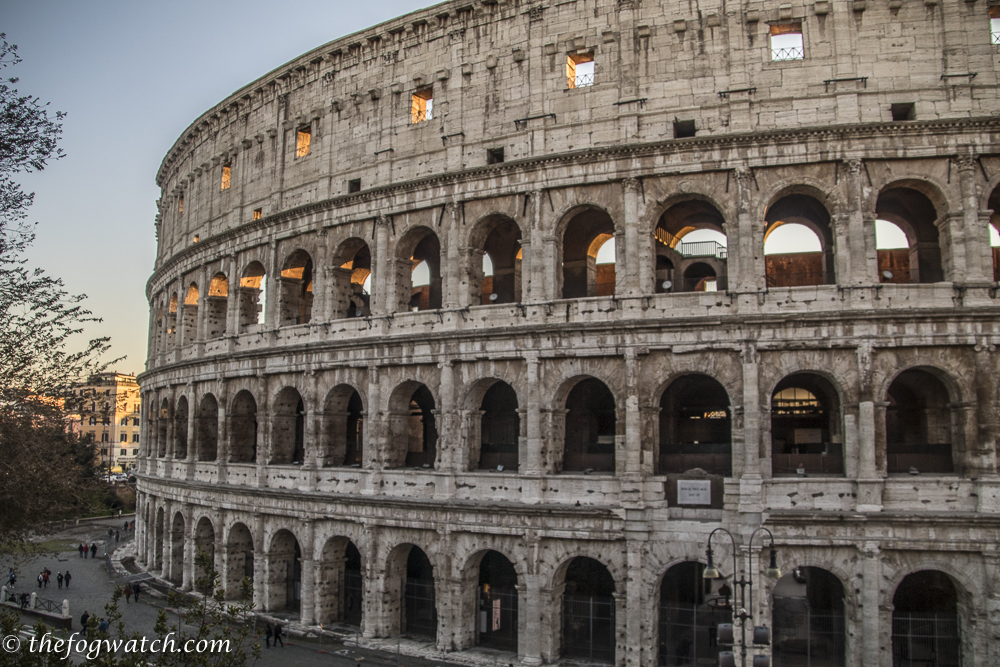
I have been in many concert venues and sports grounds over a decade-long professional music career, and what I found immediately striking were the similarities with modern facilities for the same purpose. Here were the entrances tunnelled under the array of seats for easy access by patrons. Over there are the box seats for the Emperor and principal guests. Below stage are the green rooms and machinery for conveying sets, animals and gladiators to the stage area. It is even located sufficiently close to the Cloaca Maxima that it could be closed off and flooded to stage theatrical sea battles, then great sluices could be opened to drain the water away. With the exception of the watery special effects, it is not so different from the Sydney Opera House, or the Perth Stadium, or perhaps even the Los Angeles Superbowl. But this building, in this particular location, carries an extraordinary message over the centuries.
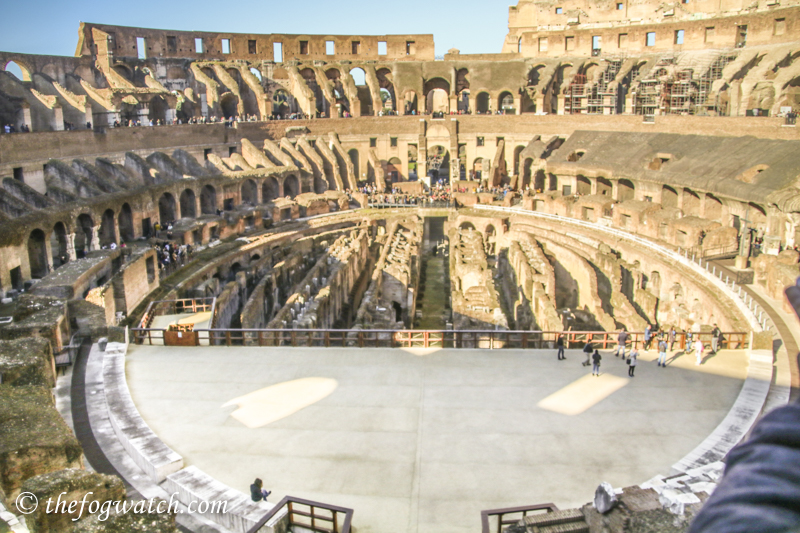
To understand the message, you have to think back to the 19th of July 64AD. A fire broke out, devastating the city – it would be known as the Great Fire of Rome, and it lasted for six days. This was during the tyrannical reign of Nero, who was out of town when the fire started. When he returned, Nero personally and publicly went to help sift through the rubble for survivors or recover the dead. Many saw it as a cynical political gesture, and blamed him for orchestrating the fire. Nero for his part blamed the Christians. It is easy to imagine small children chanting: “Lyre, Lyre pants on fire” – after all, Nero was a musician – though not by all accounts a fiddle player. Like many politicians, Nero was blamed for doing too little to prevent the fire and too little to combat it.
Their cynicism increased when he had a substantial parcel of public land appropriated so that he could extend his vast grand palace, the Domus Aurea, with its own lake, vineyards and tree-lined avenues. This was land that formerly housed merchants and townspeople – now displaced without compensation. Not only did he build a vast palace, He then commisioned a Greek sculptor to construct a colossal 35m (116’) bronze statue depicting himself as the Sun God Sol.
A vain, insecure tyrant, Nero was quick to blame others for his shortcomings. He was responsible for the Empire’s first persecution of Christians. Brought to power by the murderous politicking of his mother, five years later, Nero had her killed to consolidate his power. He raised taxes to pay for his extravagant lifestyle and became increasingly unpopular, leading to several uprisings, that he brutally repressed. Eventually, even the Senate declared him a public enemy, so he tried to flee Rome but found no support. He committed suicide on the 9th June 68AD.
Nero’s name was immediately erased from several monuments, and disruption and civil war followed with the year of four emperors, culminating in Vespasian – the first of the Flavian emperors.
Titus Flavius Vespasianus set about consolidating his position, in part, by having Nero’s palace – the Domus Aurea filled-in. And he re-zoned the district for public entertainments. In other words, he symbolically returned the public land appropriated by Nero back to the people by obliterating the palace that symbolised Nero’s tyrannical rule. He replaced it with Rome’s first and most spectacular permanent entertainment centre – the Colosseum.
Construction of the Colosseum took ten years. Vespasian also had Nero’s statue altered to represent a more formal depiction of the Sun God and moved it near to the new Flavian Amphitheatre – which came to be called the Colosseum after the giant statue nearby. When it was finally opened, the stadium could seat 50-60,000, and Vespasian declared 100 days public holiday with continuous free entertainments. Henceforth this would be a public space – a space for the people.
The building itself consists of four storeys, each with columns of a different architectural order: Doric on the first floor, Ionic on the second, Corinthian on the third and Corinthian pilasters on the fourth. This gave rise to the Vitruvian classification of the Orders of Architecture.
Inside, each of the arches on the arcades was numbered, to help patrons find their seats. These numbers matched the spectators’ entry tokens, or tesserae so each could enter by the nearest of four main entrances. Such an efficient system would also enable rapid clearing in the event of an emergency – Rome is, after all, still subject to regular earthquakes.
Entry was free, but seating was allocated according to class. Senators and senior officials at level 1; knights, merchants and landowners on level 2; general population (plebs) and women on levels 3-4. In the basement, there were cages for wild animals, and lifting mechanisms for stage sets, and to bring the animals to the surface. You can still see the grooves in the stonework marking where the lifting machinery was embedded and sliders were installed.
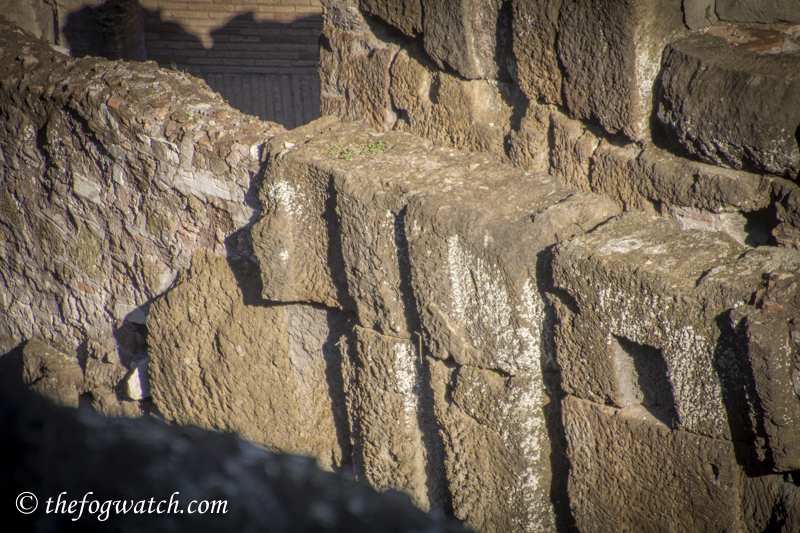
Successful gladiators were treated as rock stars, and at times the gladiatorial games provided a means by which slaves could earn their freedom, or die in the attempt. Eventually, public appetite for blood sports declined, leading to a decree outlawing gladiatorial contests in 438AD, and those involving animals a century later.
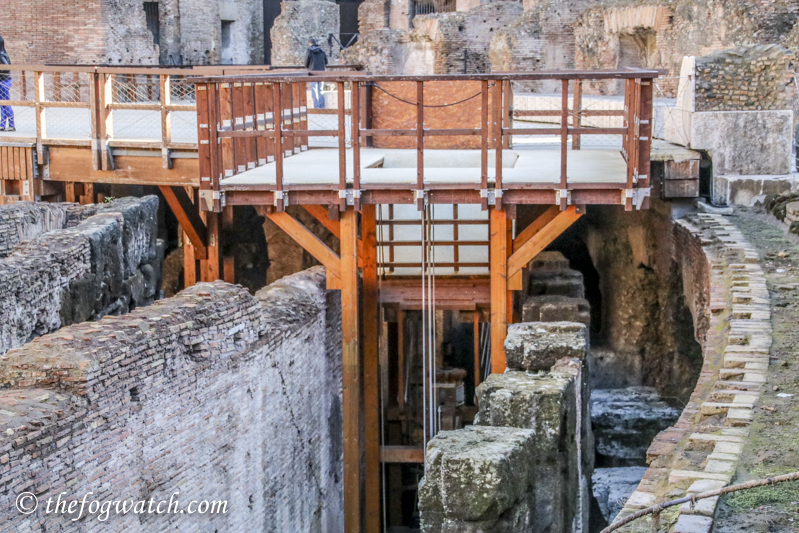
The last games were held in 523AD under King Theodoric. By the Middle Ages, the Colosseum was abandoned. The noble family of the Frangipani eventually converted part of the building into a fortified house, while the arches were occupied by blacksmiths, bakers, bootmakers and other
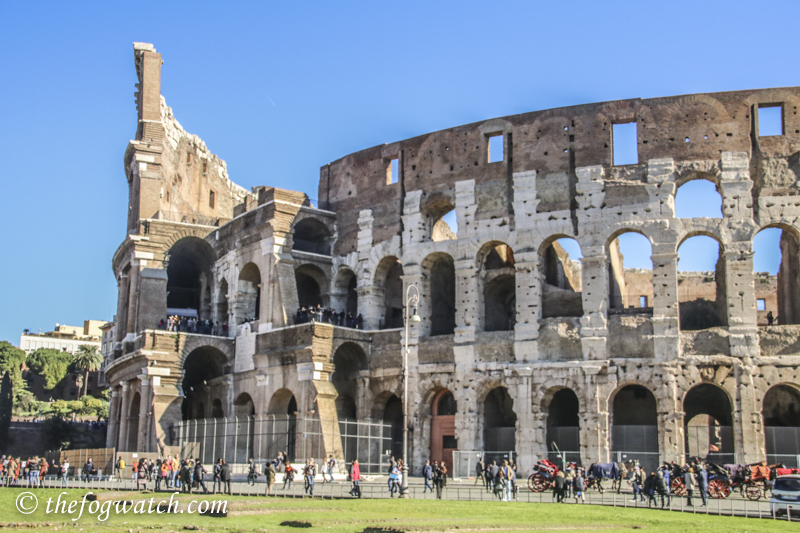
So when you visit and marvel at the scale and complexity of the structure – take a moment to reflect on the way this extraordinary building was used to obliterate the memory of a brutal tyrant – and restore the land that was taken from the people. It was built to stand as a statement – and an extraordinary performance space for ‘bread and circuses’.
****************************Why not have these posts delivered to your in-box? Just enter your email address and click the ‘subscribe’ button in the left margin, and don’t forget to respond to the confirmation email in your in-box 🙂

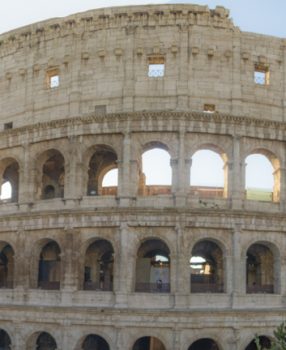
Great article Jerry
Thanks Tim – glad you enjoyed it 🙂
The brutality this building represents is incredible. There were hunting parties that went north of the empire to bring back animals for the slaughter – this happened on such a large scale that a number of animals in northern europe went extinct. It’s not a concert venue for me; it’s a version of a concentration camp, and the more slaughter, the more delighted the crowds. There was also magnificent naval battles staged, etc., which relate to 19th-century melodrama, but the spectacle of death seems to underlie everything for me.
— Not just bread and circuses, not by a long-shot.
Thanks for this comment Alan – I can see where you are coming from on this, and I agree those were brutal and dark times – not a time I would like to live in. It was a question of which tyrant was less extreme. Nero stood out for his cruelty, vanity and capricious sense of justice among his peers. Yes, there were blood ‘sports’ and brutal killings under the guise of spectacle. It is perhaps no accident that even today the language of sports is still the language of warfare and ‘sudden death’ play-offs etc. Perhaps these are reminders that we too are not so far removed with our thin veneer of civilisation from those times. My point is that Nero had been so extreme in this context that his successors tried to obliterate his memory by erasing even the buildings they inhabited, turning the symbols of their personal greed and corruption into spaces for the population once again. That this space too, lies in ruins perhaps gives hope that we have moved on a little (albeit unevenly) from those times and those attitudes.